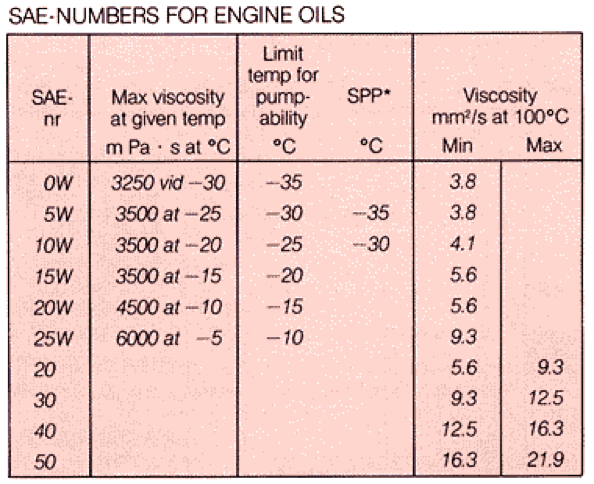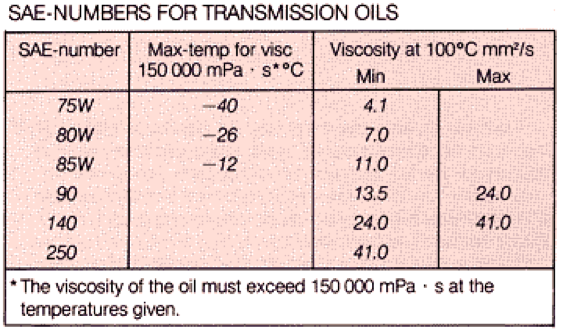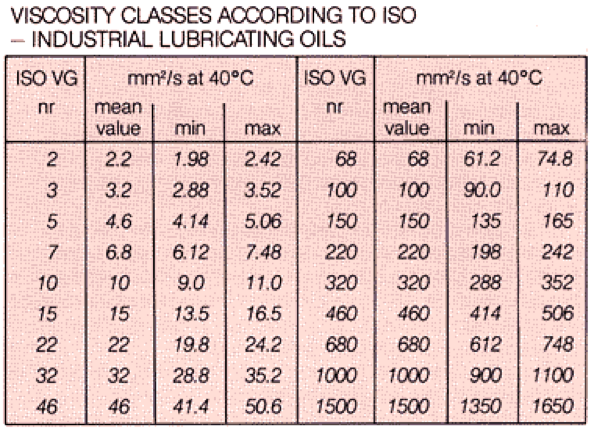Oils should function in different machines, for different purposes, in different industries, in different vehicles and machines under different operating conditions concerning temperature, pressure, load, speed and material. In order to meet the large and differing demands, the oil industry has developed a multitude of oils for different functions, e.g. machine and engine oils, oils for transmission and circulation, hydraulic oils, and oils for turbines and cylinders.
The oils are primarily classified according to their viscosity, which is a measurement of their resistance to movement. The viscosity is usually measured in centistokes, abbreviated cSt. 1 cSt = 1 mm²/s. The viscosity of an oil differs with the temperature, and the viscosity is therefore specified at certain temperatures, normally 40 °C and 100 °C.
The American SAE system (SAE = Society of Automotive Engineers) is used to classify engine and transmission oils for vehicles and machines. It has 10 different viscosity classes for engine oils and 6 different classes for transmission oils. Each viscosity class is designated with a number, which for the thinnest grades is followed by the letter W. This letter indicates that the oil is suitable for winter use.


Since 1975 industrial oils are divided into 18 different viscosity classes in accordance with ISO 3448 (ISO = International Standard Organization). These classes are also documented by SIS 155441 (SIS=Sveriges Standardiserings Kommission).

Each viscosity class is designated with ISO VG (viscosity grade) and a number that corresponds to the viscosity in mm²/s at 40 °C (a small deviation for Nos. 2, 3, 5 and 7) within a viscosity range with ±10% deviation.
The figure below gives a good survey of the difference between the viscosity classes of SAE and ISO. Drawing a horizontal line from one class to the other makes it obvious that most of the SAE classes cover a much larger viscosity range than the corresponding ISO classes.

The SAE/ISO classifications cover only the viscosity grades and are independent of the qualities of the oils in other respects.
The other qualities of the oils are dependent on their chemical composition and which additives they contain in order to obtain specific qualities. Oils can be divided into mineral oils, vegetable oils and synthetic oils. There are also oils which are composed of one or more of these base oils with or without additives for different purposes.